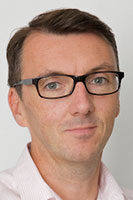
Fibre cement maker James Hardie is a growth-focused international company which has evolved its funding strategy in recent years. Its Assistant Treasurer, Kevin Daly explains to Treasury Today how the team managed the change and why it was needed.

Kevin Daly
Assistant Treasurer

No company can last over 100 years, as fibre cement maker James Hardie has, without being innovative and flexible through the ages, not least in how it goes about meeting its funding needs.
The financial crisis of 2007-2008 certainly demanded a response on that front at the Australia-listed group and James Hardie International Finance (JHIF) Designated Activity Company, the treasury subsidiary tasked with handling all of the group’s treasury related activities played a key role.
For Kevin Daly, Assistant Treasurer of the five-strong Dublin-based treasury team, the funding challenge posed by the crisis for the group, which employs 4,800 globally and generated sales of US$2.1bn in fiscal 2018, was clear: “We were on a growth path before the crisis. Being so exposed to the building industry meant we were very vulnerable to the eventual fallout, especially in the US which accounts for a majority of our business. But we were confident things would turn eventually and that investment would be needed going forward.”
At the same time, treasury understood that, in the dramatically changed post-crisis environment, it had to evolve its banking and funding structure. “We knew, for instance, that we would need high capex spend coming out of the crisis and larger facilities over a number of years so we began to look into debt capital markets as well. Diversification became a key objective.”
Making the change
In 2014 JHIF decided to evolve from bi-lateral USD facilities to a USD syndicated facility and also get a credit rating so that it would be able to access the bond markets. It engaged with the main agencies to secure ratings, allow time to build up relationships and knowledge with the agencies and ultimately to enable it to access the debt markets.
But actioning that strategy wasn’t a case of starting from scratch. The company had built up “very strong” long-term relationships with the six banks it borrowed from on a bilateral basis and it didn’t want to lose those alliances. The solution was to syndicate the existing banks: “It meant we gained the best of both worlds: the close one-to-one relationship with each one as well as the syndicate.”
There have been marked cost and economic benefits from the changeover, says Daly: “With the bilateral arrangement we had a number of different facilities maturing at different times so you were frequently into the refinancing of one facility or another. Syndication enables terms and conditions to be aligned and administration to be simplified. This funding structure also allowed James Hardie to finance the acquisition of the German- based business Fermacell in April 2018 with a 364 day term loan. This loan was refinanced in October 2018 with an inaugural EUR bond issuance, following multiple USD bond issuances over the last few years.”
Lessons learnt
Overall Daly believes JHIF’s strategy has evolved very well in recent years. Important lessons have been learnt: “A clear strategy is key. Have you got the right banks? Will you need more banks in the future? It’s about aligning funding with the business, so look carefully at what will be needed in a few years’ time and put a funding strategy in place now because it takes time to anticipate the optimal funding requirements and build the right relationships.”
He also urges colleagues evolving their own regime to understand what the banks are looking for bearing in mind that, the pressure is on them to remunerate their capital: “Banks generally need business over and above the lending facilities. It’s also important to make sure they are comfortable with their position within the structure – there’s no point in having a stressed bank as it reduces flexibility when you most need it.”
Daly is keen on treasurers sharing experiences and best practice and as a member of the Irish Association of Corporate Treasurers (IACT), he believes the body is playing a vital role in connecting them. “It’s particularly important for small departments of just one or two people. They often don’t have individuals around them to bounce ideas off and the IACT facilitates that through seminars and various gatherings, encouraging interaction. There are opportunities to critique and understand what’s going on in treasury and build strong relationships with other treasurers.” The IACT’s annual conference takes place on Wednesday 14th November 2018 in Croke Park Stadium, Dublin.